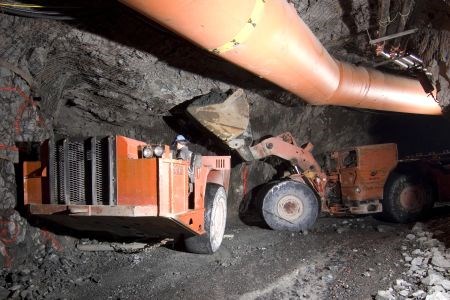The Township of Matachewan will be back in the gold mining business on Sept. 10 with the groundbreaking ceremonies at Northgate Minerals’ Young-Davidson Mine.
With $375 million being spent over the next two years, it is easily the largest construction project in this northeastern Ontario community’s rich mining history. The business spinoffs due to grow the community are expected to come in waves as the mine ramps up for production in 2012.
"We’ve seen the writing on the wall with this coming," said Andrew Van Oosten, the township's CAO.
"One of our biggest pushes has been trying to improve our infrastructure."
A new bridge over the Montreal River was completed in 2007, and $454,000 was recently announced by the Northern Ontario Heritage Fund to extend water mains to the community industrial park and across the river by June 2011 to businesses that rely on private wells as part of a $2.09-million project.
Even Highway 66, running into town from Highway 11, has been repaved and beefed up over the last two years.
The mine is three kilometres west of town on the historic Abitibi greenstone belt. It’s on the site of two mines that produced one million ounces of gold between the 1930s and 1950s.
"Matachewan is one of the few northeastern Ontario communities that’s actually grown in the last few years," from 308 residents in 2001, to 375 in 2006, said Van Oosten, who estimates the population is between 475 and 500.
The prospect of a new mine coming online has been reflected in property assessment values, home sales and a zero-per-cent vacancy rate.
Matachewan has been through the boom and bust cycles of mining before. The Young-Davidson property has been production on and off since the 1930s through a succession of companies including Hollinger Mines, Matachewan Consolidated, Royal Oak Mines and Young-Davidson Mines.
But Van Oosten said council has always been cautious in its infrastructure spending to "grow within its means."
When gold production starts in two years, Northgate will have a workforce of between 275 and 300. Van Oosten said about twice that many people will arrive as contractors to help build the mine.
There will be a housing crunch. However, the private sector is riding to the rescue.
"I have six different development proposals sitting on my desk," said Van Oosten. Four are related to housing projects, with one large commercial development with shopping and a small franchise restaurant, and one light industrial development for support industries for the mine.
One developer is looking at a planned 47-unit subdivision, while another wants to build 10 homes and another proposes to build temporary modular housing to accommodate transient workers.
The existence of a mine is sure to attract mining suppliers.
"There’s one large firm that’s come in to work on several phases of housing so they can build their demand for other commercial operations. Once the mine is on stream, they’ll be able to implement some of their large industrial projects as well."
Developers have approached the township to sell them municipal land to turn into an industrial park.
Northgate acquired the Young-Davidson property in 2005. The Vancouver gold and copper miner, which has mines in Australia, is looking for the Young-Davidson Mine to replace the production lost from its Kemess copper-gold mine in British Columbia which is closing in 2011.
The mine will have a 15-year life and will produce 180,000 ounces of gold annually.
A successful $2.6-million exploration drilling campaign east and west of the deposit has yielded good results, suggesting Young-Davidson may stay in production beyond that time.
When mining starts, Young-Davidson will run as an open pit for two years before operations move underground. Project manager Andrew Cormier said it’s "critical" to deliver feed to their 6,000-tonne-per-day processing mill while development of the underground workings continue.
Rather than sink a new production shaft from surface, the company decided to deepen the old Matachewan Consolidated Mine shaft from 775 metres to 1,515 metres and raise a new shaft from the bottom of the reserve. The production shaft work is contracted to North Bay’s Cementation.
Northgate has completed its first round of hires with 60 employees on site. They’re working with Dumas Contracting of Timmins, who built the exploration ramp, to take over more of the underground development.
On the surface side, MLA Northern Contracting of Thunder Bay was starting work in August on the ground preparation for the $81-million gold processing plant. About $75 million will be spent on infrastructure, including a new administration-engineering building, warehouse and maintenance shop.
The power supply will be upgraded with 47 kilometres of new transmission line being strung from Kirkland Lake.
Cormier said it will be a challenge to secure a workforce of close to 300 when Northgate is competing with other miners for labour. "We want workers to live in the community and we recognize we will have to develop people. We want to attract enough senior-level people to act as trainers and mentors to the entry-level people."
The new round of hiring will likely happen next year for their surface mill operation. Cormier said the "economic machine" that a mine creates likely means mining supply firms will set up shop in town.
"That’s the spinoff of mining projects in these towns where one mining job creates three to five spinoff jobs in support of the operation."
Matachewan’s small businesses have been supportive and benefitted from the years of advanced exploration at the site. As the company moves into the development stage, "there are still opportunities for these contractors to supply into larger contractors or grow their own business," said Cormier.




